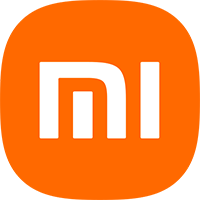Top Projectors Brands Based In china Brands
Here's what we recommend for:
Brand Match Quiz
What is your budget for a new Projector?
Product Selection
4.6/5
Hisense has a diverse product lineup, with projectors that span various categories, including home theater, portable, and business models. Their offerings include short throw and ultra-short throw projectors, which they often market as "Laser TVs." This innovative branding emphasizes the quality and performance of their laser projectors, which provide exceptional brightness and color accuracy, making them suitable for a variety of settings. While Hisense does not have as extensive a...
Availability
4.4/5
Hisense projectors are widely available through various online and brick-and-mortar retailers. Major electronics retailers, such as Best Buy and Walmart, often carry a selection of Hisense projectors, making it easy for consumers to find them. Additionally, online platforms like Amazon provide an extensive range of Hisense models, complete with customer reviews to help inform purchasing decisions. The availability of Hisense projectors across multiple channels makes them an accessible choice for...
Design/Look
4.2/5
Hisense projectors boast a modern and sleek design that fits well in any environment, from a home theater to a business meeting room. Their aesthetic is characterized by clean lines and a contemporary finish, making them an attractive addition to your setup. Many of their models also feature compact designs, particularly the portable options, which are lightweight and easy to transport. Functionality is also key in Hisense’s design approach. Many...
Affordability
4/5
One of Hisense's greatest strengths is its affordability. The brand consistently provides high-quality projectors at competitive prices, making it a popular choice among budget-conscious consumers. Hisense projectors are designed to deliver great value without compromising on essential features, such as resolution and brightness. This affordability does not mean a lack of performance; many models incorporate advanced technologies that enhance the viewing experience, making them an attractive option for those who...
Product Selection
4.6/5
Xiaomi’s approach to product selection is focused yet impactful. The brand offers a carefully curated range of projectors that cater primarily to the home entertainment and portable segments. Their lineup includes sleek, minimalistic designs that embody Xiaomi’s signature aesthetic, while also packing in advanced features typically found in more expensive models. While Xiaomi may not have the broadest selection, their focus on quality over quantity ensures that each model is...
Availability
4.2/5
Xiaomi projectors, while popular in many global markets, have a more limited presence in the U.S. Unlike other regions where Xiaomi products are widely available, American consumers may find fewer options when shopping for Xiaomi projectors. Availability is mostly confined to online platforms like Amazon and select importers, and the range of models may be restricted compared to what’s offered in Asia and Europe. This limited availability could mean that...
Design/Look
4.2/5
True to Xiaomi’s design philosophy, their projectors are sleek, modern, and minimalist. The brand’s focus on aesthetics is evident in every model, with clean lines, compact forms, and a focus on functionality. Xiaomi projectors are designed to blend seamlessly into any environment, whether it's a modern living room or a cozy bedroom. Beyond just good looks, Xiaomi emphasizes practicality in their designs. Features like integrated speakers, simple user interfaces, and...
Affordability
4.3/5
Affordability is one of Xiaomi’s strongest selling points across all its product categories, and projectors are no different. Xiaomi has managed to carve out a niche by offering high-quality projectors at prices that are significantly lower than many competitors. This makes Xiaomi an appealing choice for budget-conscious consumers who don’t want to sacrifice quality for cost. The value proposition of Xiaomi projectors is further enhanced by the inclusion of advanced...

Test
All Projectors Brands
The Ultimate Guide: Your Path To Choosing The Perfect Projector
In this comprehensive guide, we go over every detail you need to know about these projectors. By the time you finish reading this guide, you will learn all about the distribution of different kinds of projectors, technical specifications, and selecting the right kind for your setting and needs.
What Types of Projectors Are Available?
Projectors come in a variety of types, each optimized for different applications:
-
Home Theater Projectors: These are high-resolution projectors, up to 4K and even 8K, used for movie fanatics. They usually have high contrast ratios and outstanding color accuracy to simulate home theater.
Pro Tip: To combat ambient light, look for projectors with higher brightness levels and consider investing in a reflective screen to boost image quality.
-
Portable Projectors: Small and lightweight, these are perfect for a user who wants a flexible solution in on-the-go entertainment or business presentations. Most often, they compromise some resolution and brightness for excellent portability, but key features include built-in battery power, smart features, and easy connectivity.
-
Gaming Projectors: Focused on low input lag (ideally below 20ms) and high refresh rates (up to 120Hz or more), these projectors ensure smooth, responsive gameplay with minimal motion blur.
-
Ultra-Short-Throw Projectors (UST): These are designed so that they can project big pictures from very short distances, thus suitable for use in rooms or setups that have space problems. Most of these projectors come with the convenient feature of lens shift and zoom for flexible installation. UST models can be placed just inches from the screen, the ideal distance for precisely what a modern setup demands—no clutter. Generally, they demonstrate excellent brightness levels and automatic keystone correction features that adjust to the distance they are placed towards the screen.
-
Business Projectors: these are optimized projectors for the presentation class, which require very high brightness—3,000 lumens and more—and high contrast to shine clear, keen text.
Pro Tip: Higher brightness and versatile connectivity options make these projectors effective in a variety of settings.
Why Choose a Projector Over a TV?
Projectors have an edge with great advantages that make them best for certain uses. This flexibility in screen intended size makes it possible to have settings in their displays much larger than most TVs'—often over 100 inches—without significantly increasing the cost, making projectors best for that home theater experience. They are also more portable than large TVs, which can be easily carried from room to room or even taken outside for a flexible entertainment solution. It has two pieces, the projector and the screen, which truly gives a theater experience. Space efficiency is another reason, with the ability to mount the projector on the ceiling or position it discreetly somewhere, hence preventing space from being overtaken by a large TV. Ultra-short-throw models fare much better in particularly small or even irregularly shaped rooms.
Features to Look for in a Projector
When evaluating projectors, certain advanced features can greatly enhance your viewing experience:
Resolution
The higher the resolution, the more there are pixels, and the sharper and more detailed the picture gets. Besides this, common resolutions include HD (720p), Full HD (1080p), 4K UHD (2160p), and even 8K UHD (4320p). Lately, at least 1080p has been recommended for clearer images. But to get the best quality image, 4K resolution will be much better, especially for large screens.
Contrast Ratio
This is the ratio of the darkest part to the lightest part of the image. A higher contrast ratio gives deeper blacks and more vivid colors, which definitely make a visual difference in cinematic viewing. Dynamic contrast ratio, with dynamic iris technology, further alters brightness on the go to best suit the dynamics of each scene for an immersive experience.
Brightness (Lumens)
Lumens measure the total light output of the projector. For example, bright rooms or outdoor use would best benefit from something with about 3,000 lumens or more, while lower lumens would suffice for a controlled, dark environment. ANSI lumens is a standardized method of measurement that gives a more accurate indication of brightness compared to manufacturer-quoted lumens.
Aspect Ratio
The aspect ratio determines the shape of the projected image. The most common ratios are 16:9 (widescreen, ideal for most content), 4:3 (traditional TV or presentation format), and 2.35:1 (for ultra-wide, cinematic content). Choose based on your content preference and screen size.
Environmental Considerations: Room Brightness, Size, and Throw Distance & Ratio
Selecting the right projector involves understanding your environment:
-
Room Brightness: If your room has a lot of windows & ambient light, you’ll need a projector with high brightness (measured in lumens). A rating of 2,000 lumens or more is recommended for bright rooms, while 1,500 lumens may suffice for darker environments. High brightness is crucial for maintaining image quality in well-lit rooms.
-
Room Size: The size of your room dictates the ideal throw distance (the distance between the projector and the screen). Larger rooms allow for longer throw distances, while smaller rooms may require short-throw or ultra-short-throw projectors. Ensure the projector’s throw ratio matches your room dimensions.
-
Throw Distance & Ratio: It is defined through the relation of throw distance and image width. For example, a 1.5:1 ratio means that in case the screen is 1.5 feet at a distance from the image, the image width appears 1 foot. It has to be realized that this ratio is important to make an appropriate image in size. The throw distance, combined with the throw ratio, measures the image size that would be projected from a specific distance. For instance, a projector with a throw ratio of 1.2:1, if projected from 10 feet away from the screen, would result in an 8.3-foot-wide image.
Technologies
Projectors have various technologies to deliver the best visual experience. let's take a look at them :
Pixel Shift
A technique used to enhance image resolution beyond the native pixel count of a projector. This technology works by rapidly shifting the image on the screen by a fraction of a pixel, effectively increasing the perceived resolution. For instance, a projector with a native resolution of 1080p can use pixel shift to simulate 4K resolution, delivering a sharper and more detailed image.
Pixel Shift is an excellent option for those looking to achieve higher resolution at a lower cost, offering a substantial improvement in image quality for various types of content.
Imaging Technology
Imaging technology is at the heart of a projector's performance, defining how it produces and projects images. Understanding the different types—such as LCD, DLP, and LCoS—can help you choose a projector that delivers the best image quality for your needs, Each technology has its unique strengths and trade-offs, influencing everything from clarity to color accuracy :
-
LCD (Liquid Crystal Display): Produces sharp and vibrant images with good color accuracy but may suffer from lower contrast compared to DLP and LCoS.
-
DLP (Digital Light Processing): Offers excellent contrast and smooth motion but may have a "rainbow effect." Known for durability and brightness.
-
LCoS (Liquid Crystal on Silicon): Combines the strengths of LCD and DLP, offering superior image quality with minimal drawbacks but at a higher price point.
Low Input Lag
Essential for gaming, low input lag ensures minimal delay between your controller input and the on-screen action. Projectors that possess an input lag of under 20 ms are appropriate for an absolutely smooth gaming experience.
Refresh Rate
Refers to how many times per second the image is updated on the screen, measured in Hertz (Hz); A higher refresh rate (e.g., 120Hz) results in smoother motion, reducing blur in fast-paced content such as gaming or sports.
Color Accuracy
Projectors with Rec. 709 or DCI-P3 color space coverage, ensuring accurate color reproduction. Calibration options are also important for tweaking color settings to perfection, especially for home theaters.
HDR Support
High Dynamic Range (HDR) increases the color range and contrast for more details and more exciting content. Look for projectors that support HDR10 or Dolby Vision for the best results.
Zoom
Optical zoom allows you to adjust the image size without moving the projector, while digital zoom may degrade image quality. A zoom range of 1.2x or more provides installation flexibility.
Smart Features
Some projectors run an in‐built operating system making them support streaming apps, voice controls, and all smart home devices integration, These features eliminate the need for external streaming devices and enhance usability.
Light Sources (Lamp, Laser, or LED?)
The choice of light source has a considerable influence on performance, maintenance, and cost. Lamp-based projectors are less expensive but have a shorter lifespan and require bulb changes, making them ideal for infrequent usage and those on a tight budget. Laser projectors provide stronger brightness, a longer lifespan, and more constant color accuracy, making them excellent for frequent usage and those wanting high-quality performance, despite their higher initial cost. LED projectors have a long lifespan and excellent color accuracy, but they are often less bright, making them ideal for portable or low-light applications.
Comprehensive Evaluation of Projectors in Our Reviews
In our reviews, we meticulously evaluate projector-making brands based on several critical aspects and rate them, each covering specific features and technologies discussed in this guide:
-
Image Quality: We assess the resolution (e.g., 1080p, 4K), contrast ratio, brightness (lumens), and color accuracy (Rec. 709 or DCI-P3 coverage). Technologies such as LCD, DLP, and LCoS are evaluated for their impact on overall image clarity and vibrancy.
-
Features & Performance: This covers aspect ratio, input lag, refresh rate, Pixel shift, HDR support, zoom options, and smart features like built-in operating systems. We also examine how different light sources (lamp, laser, LED) affect performance and maintenance.
-
Brand Reputation: We look at how strong the brands are in the market, considering their capability in terms of innovation and brand history.
-
Design & Look: We analyze the brand’s physical design style, including the ease of setup (like UST placement), and how the projector complements modern home aesthetics.
-
Build Quality & Durability: This aspect focuses on the materials and construction, considering factors like heat dissipation, longevity of the light source, and overall robustness.
-
Affordability: We compare the cost-effectiveness of each brand’s products, focusing on value for the price, whether you're on a budget or looking for premium quality.
-
Customer Support & Warranty: We review the availability and quality of customer support and warranty services, which is crucial for long-term satisfaction.
-
Product Selection: We provide insights into each brand range of model lines, to help you find the right match.
-
Availability: We consider how easily accessible the projectors are both -physically and online, ensuring you can purchase the model that suits your needs easily.
What Matters Most to You?
Obviously, Image Quality is the most important aspect to consider, regardless of your specific needs. A projector with excellent resolution, contrast ratio, and color accuracy will deliver the most satisfying visual experience. However, after ensuring top-tier image quality, other priorities should be based on your use case:
-
For Home Theater Enthusiasts: Focus on Features & Performance, and Build Quality. Prioritize high resolution (4K), high contrast ratios, HDR support, and accurate color reproduction (Rec. 709 or DCI-P3). Look for projectors with robust build quality and a light source that offers consistent performance over time.
-
For Gamers: Emphasize Features & Performance. Finding A low input lag (under 20ms), high refresh rate (120Hz), and good color accuracy is the key. Also, consider Build Quality for durable performance during intense gaming sessions.
-
For Portable Needs: Affordability, Design & Look, and Features & Performance are crucial. Look for a compact, lightweight design with smart features like built-in battery power and wireless connectivity. Prioritize LED light sources for long lifespan and energy efficiency.
-
For Business Use: Focus on and under Features & Performance. High brightness (3,000 lumens or more) and sharp text clarity are vital. Also, Availability and Customer Support & Warranty are important to ensure reliability in professional settings.
By aligning your needs with these aspects, you can make a well-informed decision and select the projector that perfectly suits your requirements.
What We Do? Simplify Your Search for the Best Projector Brand
At BrandChoose.com, we focus on assisting you to compare and identify the most suitable projector brand for your use. Our goal is to help you choose the right brand for your needs whether you are creating a home theater, gaming zone, or business presentation. Using our detailed brand analysis and knowledge, we will help you make the right decision based on your needs and wallet. Allow us to make your search easier and guide you on how to make the right decision in selecting the best brand for your ultimate home theater experience!
KEEP READING


























